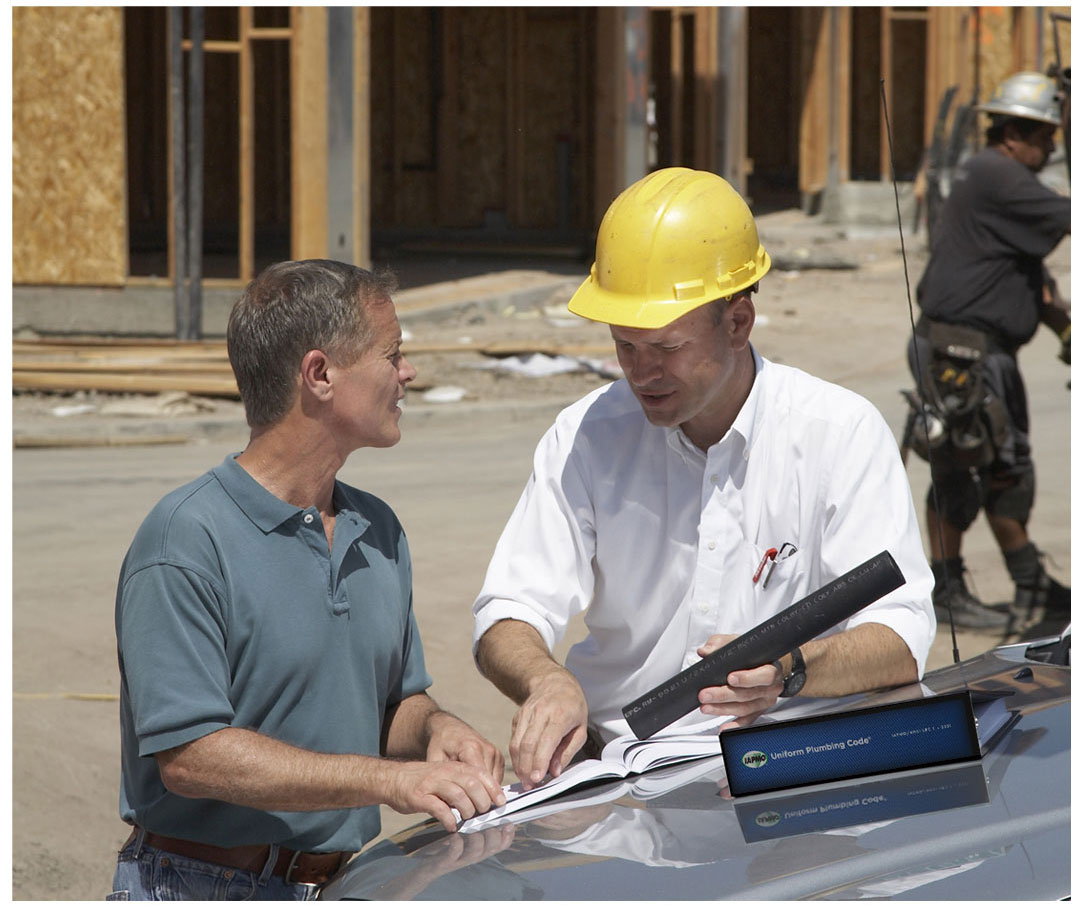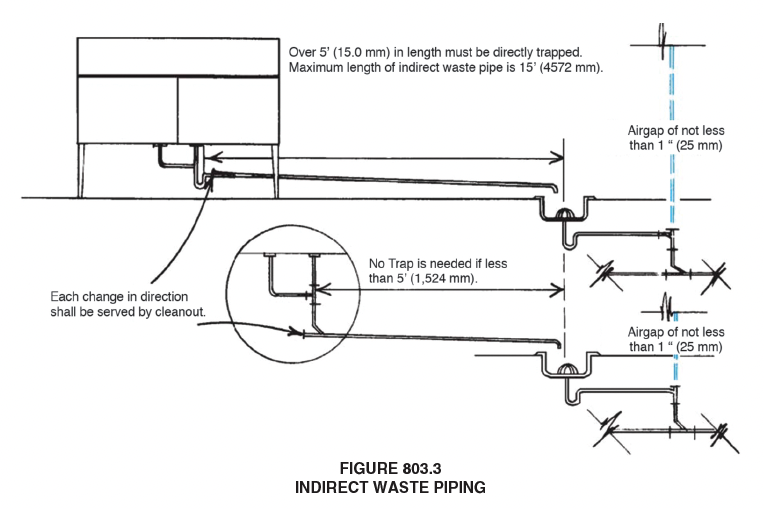July 13, 2023

From the 2021 UPC Illustrated Training Manual, Chapter 8, INDIRECT WASTES
803.3 Pipe Size and Length. Except as hereinafter provided, the size of indirect waste piping shall be in accordance with other sections of this code applicable to drainage and vent piping. No vent from indirect waste piping shall combine with a sewer-connected vent, but shall extend separately to the outside air. Indirect waste pipes exceeding 5 feet (1524 mm), but less than 15 feet (4572 mm) in length shall be directly trapped, but such traps need not be vented.
Indirect waste pipes less than 15 feet (4572 mm) in length shall be not less than the diameter of the drain outlet or tailpiece of the fixture, appliance, or equipment served, and in no case less than 1⁄2 of an inch (15 mm). Angles and changes of direction in such indirect waste pipes shall be provided with cleanouts to permit flushing and cleaning.
The installation of indirect waste piping shall be governed as is other drainage and vent piping and all chapters and sections that apply to drainage and vent piping shall also apply to indirect waste piping. However, the vents from indirect waste shall not intersect with other drainage system vents so as to prevent possible contamination from contaminants emitted in the airflow from the drainage system. Indirect waste vents shall be permitted to connect with other indirect waste vents (see Figure 801.3.2b).

There are two other requirements for indirect waste that are different than normal drainage piping. The first requirement deals with the length of pipe. If the indirect waste piping is longer than five feet, the indirect waste must be trapped but not vented (see Figure 803.3). This is to prevent odors from materials that might lie in the piping from entering the fixtures or equipment. Notice that there is no stated requirement for venting of indirect waste over 15 feet. This is because indirect waste lines, except from refrigeration coils and ice machines, are limited to a maximum of 15 feet in length. If an indirect waste line over 15 feet were approved, it would need to be vented as described in Chapter 9.

The second requirement is for cleanouts at all angles and changes of direction. This implies a cleanout is needed at every 45- or 90-degree fitting. This could entail quite a bit of work unless the installation is accomplished with the least amount of piping and fittings as possible.
The 2021 Uniform Plumbing Code Illustrated Training Manual is available for purchase here.
(This is not to be considered the official position of IAPMO, nor is it an official interpretation of the Codes.)

IAPMO
IAPMO develops and publishes the Uniform Plumbing Code®,the most widely recognized code of practice used by the plumbing industry worldwide; Uniform Mechanical Code®; Uniform Swimming Pool, Spa and Hot Tub Code®; and Uniform Solar Energy, Hydronics and Geothermal Code™ — the only plumbing, mechanical, solar energy and swimming pool codes designated by ANSI as American National Standards — and the Water Efficiency Standard (WE-Stand)™. IAPMO works with government, contractors, labor force, and manufacturers to produce product standards, technical manuals, personnel certification/educational programs and additional resources in order to meet the ever-evolving demands of the industry in protecting public health and safety.
Last modified: July 13, 2023
